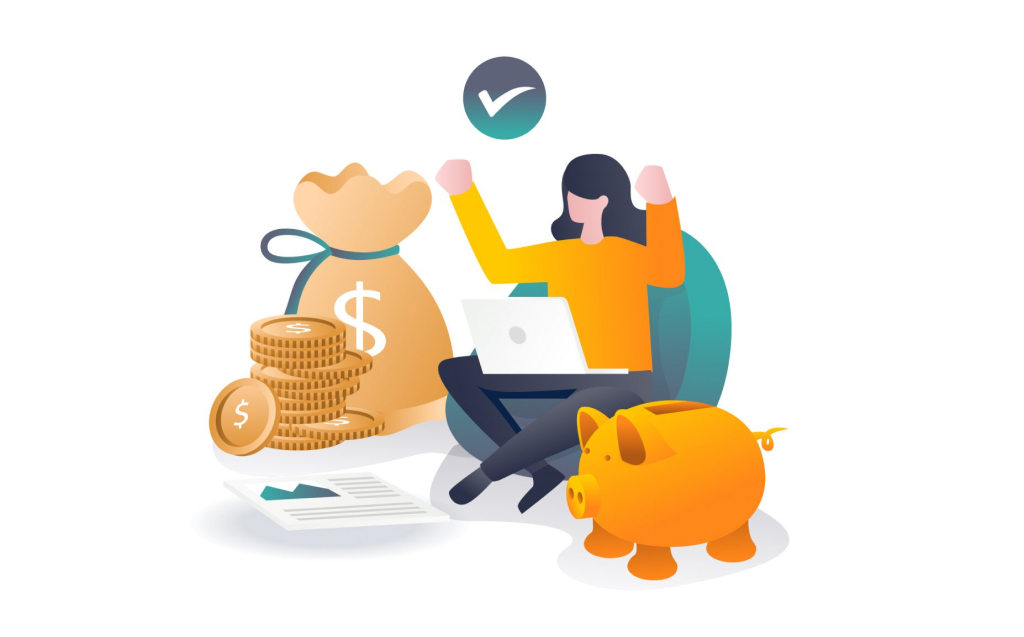
How Much Money Can You Earn with Peer-to-peer Lending?
Peer-to-peer microlending return on investment (ROI) ranges from 4% to 9% annually. Some investors report yields of over 10%, but that’s when they are investing in riskier lending. As a result, an investor with a well-diversified portfolio may get an ROI of 4% to 9%.
Did you ever think of making money without investing in the stock market? Now is the time to consider one of the best options, microlending. You can earn money by using your surplus funds to lend it to those in need. If you are curious to know how much you can make with microlending, also known as peer-to-peer lending, get all the details in this blog.
Earning money by investing in people’s mortgages or credit card financing through P2P lending is a relatively new concept. However, several peer-to-peer lending platforms have now made it easier to invest money online and earn great returns. But, you shouldn’t forget that all kinds of investments involve risks, so weigh your options carefully.
How much money can you make with peer-to-peer lending?
Annualized returns for peer-to-peer loans can vary between 4% and 9%. But several other factors go into estimating your year-over-year earnings. Generally, investors who take longer-term and riskier loans gain higher returns on their investments.
You purchase fractions of a loan called notes with peer-to-peer lending, and you are likely to see more positive returns if you invest in more than a hundred notes.
Many investors also purchase notes with a three or five-year term, which means the loan is expected to be paid in full in three or five years. Five-year term loans usually have higher returns.
Normally, notes are assigned a letter such as A, B, or C, where A notes involve fewer risks and rewards, and the further you get away from it, the risks and returns increase.
It’s clear that when you take higher risks with peer-to-peer micro-lending, you have a better chance of seeing double-digit returns.
Is peer-to-peer lending safe?
All investments carry some sort of risk, and peer-to-peer lending is no different. You are subject to loan defaults with P2P lending, plus your capital is also invested in a hard liquidate asset.
Since peer-to-peer lending has not been around for a very long time, it is untested in the long run. It’s also difficult to ascertain how certain economic hardships may affect your P2P lending investment.
What risks are involved in P2P lending?
The primary risk of P2P lending involves defaults and low liquidity, but with a well-diversified investment portfolio, default rates may roughly be 5%.
However, this shouldn’t be a problem if you’re experiencing a positive return on your investment because defaults are problematic only when you don’t have a well-diversified portfolio.
Investors putting all their money into one microloan increase their risk of losing the entire investment should the borrower default.
You simply can’t cash out your investment whenever you feel like it since investments in P2P lending are not very liquid. And as a rule of thumb, never invest the money you’ll need in the short term. If you buy a 5-year note, you’ll get the money back after the said period.
Can you lose money with peer-to-peer lending?
Yes, you can if the borrower defaults, which is the most common way to lose money with peer-to-peer loans. That’s why, if you decide to invest in P2P lending, then plan on defaults. It is also best to diversify your investment portfolio.
Is peer-to-peer lending worth it?
P2P lending is a good stock market alternative, and what’s even better is that you can diversify your investment portfolio. For instance, you could have portions of your portfolio invested in peer-to-peer lending, real estate crowdfunding, and stocks.
It is always better to start small, but invest in at least 100 different notes so you can test the waters and get comfortable learning how P2P lending works for you.
Bottomline
Eventually, you need to decide whether or not you want to invest and make money with peer-to-peer lending and if it’s worth it for you.
Although peer-to-peer lending may not be for everyone, it is a good way to start making more money through carefully diversified investments.
If you’re not sure where to get started, take the help of a trusted microlending platform such as Lendee that can help you get faster and greater returns on your investments without the need to split your earned interests, unlike other P2P platforms.